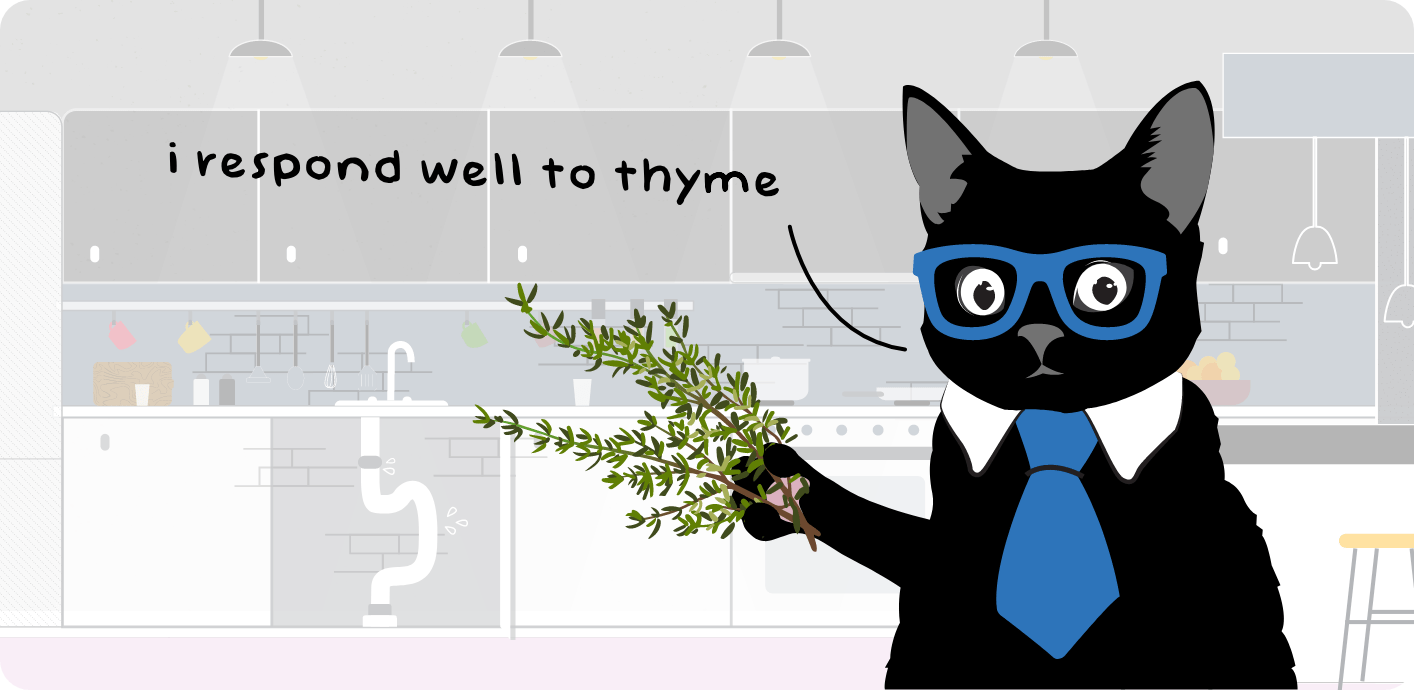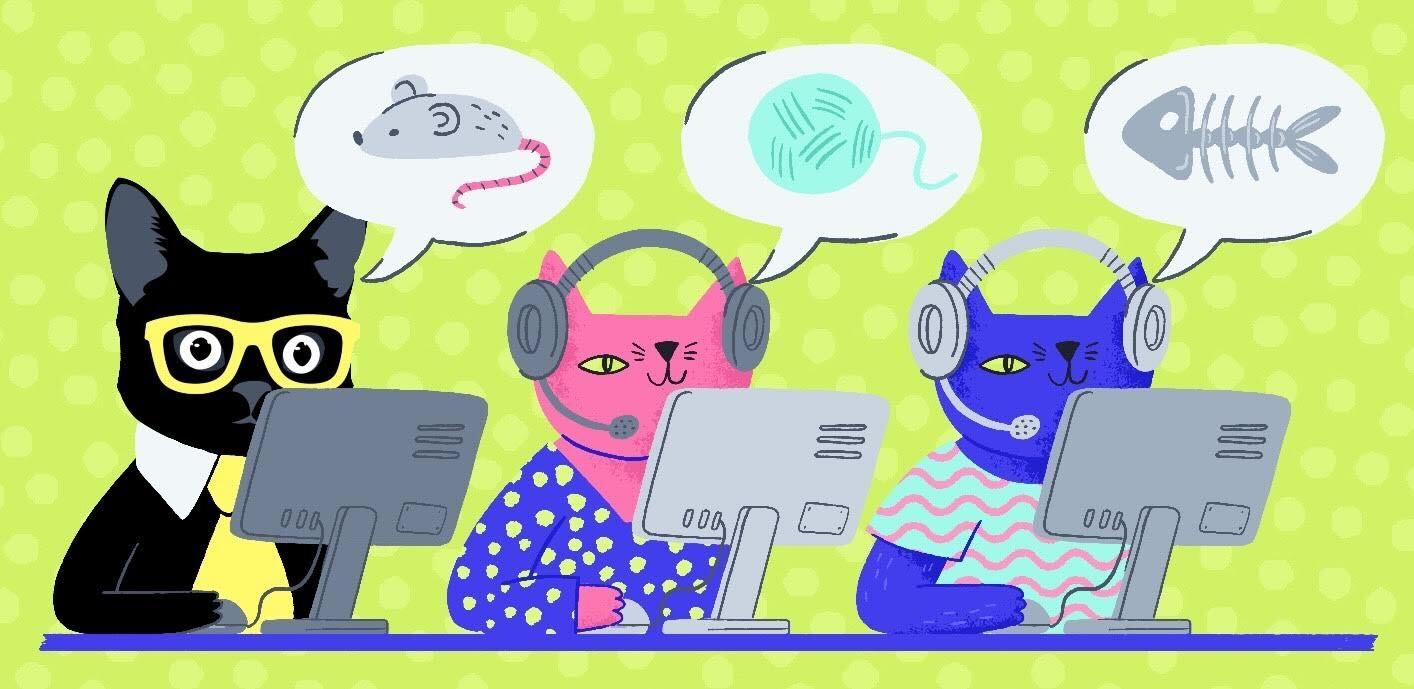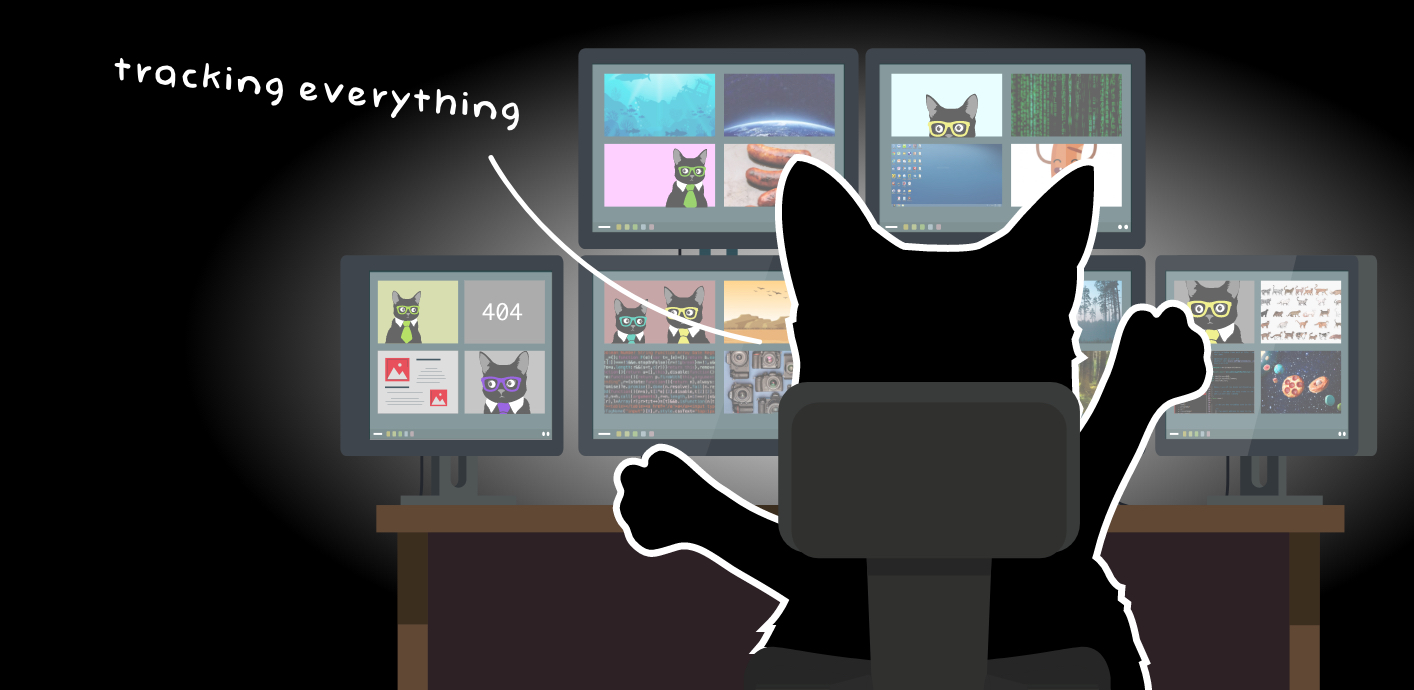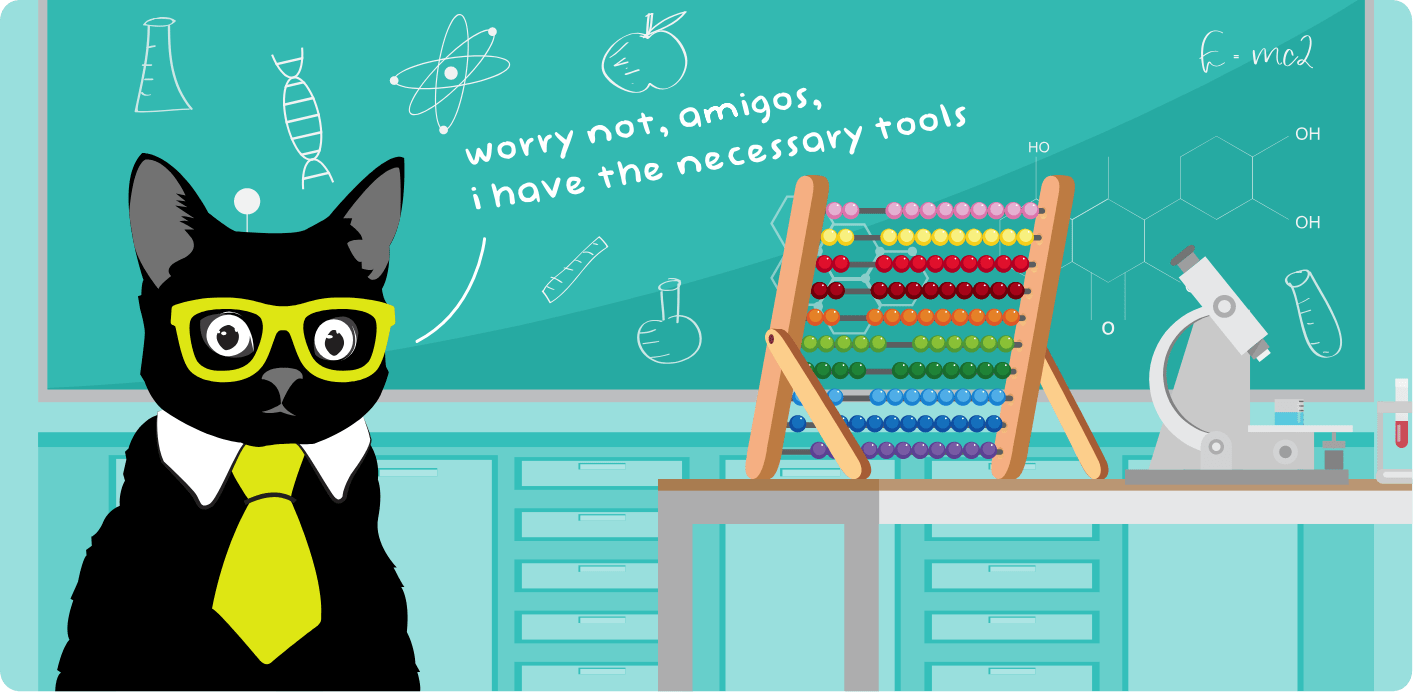You know how important it is to provide prompt and effective support to your customers. You also understand the need for agility in responding to customer inquiries and requests. But the balance between quality and speed is tricky, and it is one that customer service automation is here to help solve.
According to our benchmark report, 70% of organizations plan to invest more in support automation.
Like a cat to a mouse, let’s cut to the chase.

What is customer service automation?
Customer service automation is the process of using technology to carry out certain aspects of customer support. Automated technology helps companies respond proactively to simple inquiries, manage data, and provide self-service options.
It is cost-effective, improves team productivity, and is a wonder at collecting and managing data in a way that would be otherwise impossible.
When people think of how to automate customer service, they usually jump straight to chatbots. Chatbots are the most externally evident manifestation of automated support. However, there are many more automated customer service tools that can be overlooked.
Examples of automating customer service:
- Notifications of service/product disruptions, upgrades, new releases
- Surveys to collect customer feedback
- Regular assignments for manual quality reviews
- Reviewing tickets for 100% coverage
- Employee shift scheduling
- Data analytics

The why: Advantages of customer service automation
You can sum up customer service automation as a way to be more efficient without sacrificing quality. Most of the benefits of automating support can slot into two major categories: saving money and saving time.
Reducing costs
Overall, customer service automation is cost-effective because it:
- Reduces labor costs
- Increases operational efficiency.
Customer service automation offers cost-saving benefits through various means. Firstly, it reduces labor customer service costs by eliminating the need for manual work.
Automated customer service streamlines processes, increasing operational efficiency and enabling businesses to handle more customer interactions without additional resources. This reduces errors and the need for costly rework.
Companies can take more inquiries without proportional resource increases. Self-service options empower customers to find answers independently, reducing the need for a human agent’s intervention and decreasing support ticket volumes.
This optimized resource allocation maximizes productivity and contributes to cost reduction.
Reducing time
Overall, customer service automation optimizes time management by
- Providing instant responses,
- Streamlining processes,
- Enabling self-service.
According to Salesforce, 98% of service professionals that use automation say it saves time (50% say major improvement)
Automated systems can provide immediate answers to customer inquiries, eliminating the waiting time for a human representative. This quick availability of information speeds up issue resolution and reduces customer wait times.
Additionally, automating customer service streamlines various processes, such as data entry and ticket routing, resulting in faster handling of customer interactions. The improved efficiency leads to shorter response times, quicker issue resolution, and reduced customer turnaround time.
There is also the benefit of self-service.
Knowledge bases, FAQs, and chatbots can all be automated to allow customers to find answers and resolve issues independently. By enabling self-service, automated customer service reduces dependency on human interaction and empowers customers to access the information they need quickly.
Find out more about maintaining an effective knowledge base.

What does this mean for customers?
The benefits for customers extend further than simply getting an answer faster – automated service is also what many customers prefer. 49% of customers prefer resolving issues independently rather than reaching out for customer service assistance.
Customers desire self-sufficiency.
39% of all chats between businesses and consumers currently involve a chatbot.
The digital age means that we all take convenience for granted. We want information at our fingertips, and would prefer to troubleshoot ourselves before having to contact a support center.
This indicates a growing expectation for businesses to provide adequate self-service options via automated support.

What does this mean for your customer service team?
81% of support leaders believe that technology, including automated tools, can positively impact employee engagement and attrition rates.
By integrating automated customer service into operations, leaders can alleviate the burden of mundane tasks that often leave agents feeling undervalued and unmotivated.
Through automated customer service, agents can escape the monotony of routine tasks and embrace their role as problem solvers and brand ambassadors. This allows them to utilize their expertise, critical thinking abilities, and empathy to provide personalized support and build stronger customer relationships.

The wow: Improving data-driven insights with customer service automation
Any company planning to use AI should master automation first. AI flourishes on data – the more the better, and the cleaner the better. Continuous data collection and analysis play a vital role in enabling AI systems to constantly enhance their performance and adapt to evolving circumstances.
But being data-driven is near-impossible if you do not automate the collection and hygiene of it.
This is one of the main reasons that Zendesk’s trends study declares that automation is the number one priority for customer service teams at this time.
Automation is like having a trusty assistant that takes care of collecting, storing, and managing your customer data with precision. In simple terms, it acts as a guardian for your data, ensuring it stays clean and organized.

Automation is a requisite for effective AI
By automating data entry, validation, and verification processes, errors are eliminated, and data integration becomes seamless. Customer service teams and AI can work without the burden of data inconsistencies, ensuring smooth operations and efficient service delivery.
The pitfalls of automated customer service (and how to overcome them!)
There are dangers, of course, when it comes to relying on technology to carry out tasks.
49% of customers have encountered insufficient self-service options, leading to frustration and abandoned attempts. And many teams will feel frustrated if their time is wasted on cleaning up a trail of mistakes that technology leaves in its wake.
Automated customer service relies on technology, which can sometimes act up and cause technical issues, putting a damper on customer service representatives’ ability to have genuine chats with customers.

The thing is, automated systems may only sometimes give accurate or detailed answers to tricky customer questions, leaving folks feeling like they need to be in touch with the customer service team.
Disconnection is not what you want to instill.
There is always a cut-off point at which a customer’s solution is too complex, or their frustration too high, to be resolved by technology. At this point, an agent’s customer service skills are essential.
So, how do you make sure you hit the right mark and avoid over-automating your support?

5 customer service automation tips
1. Start small
You don’t need to overwhelm your team and customers by completely revolutionizing how you provide support. Begin by automating those simple, repetitive customer service tasks that seem to crop up again and again.
Think of automating customer service as taking care of those mundane chores, like responding to common customer requests or sending out reminder emails. This way, your agents and customers can get increasingly comfortable with changes, and you also ensure that your processes run as smoothly as butter.

2. Keep it personal
You can use automation tools to supplement your customer support process, not replace it.
While it’s fantastic to have these handy tools at your disposal, they should never replace the warmth and personal touch that only a human representative can provide. Let automation enhance your customer service, but always remember to sprinkle it with personalized responses from real people whenever possible.
After all, there’s nothing quite like a genuine interaction to make your customers feel special.
Personalized responses should still be provided by a human representative whenever a customer feels the need to talk to a person. The trick is knowing where in the entire customer journey that is.
![Customer Service Agent Onboarding Checklist [Free Template]](https://storage.googleapis.com/static_site_bucket/2dfce487-prance-back-and-forth.png)
3. Monitor and adjust
Regularly monitor how automations perform and make adjustments where necessary to ensure maximum efficiency and effectiveness.
While automations are a one-time set up with lifetime value, don’t think you can “set it and forget it”. Keep an eagle eye on the metrics (more on that later!) and gather feedback from your team and customers. This way, you can make necessary adjustments to ensure maximum efficiency and effectiveness.

4. Leverage data
With automation by your side, you gain access to a wealth of insights and information about your customers and their interactions.
It’s like having a magnifying glass to uncover hidden patterns and trends. Leverage this valuable data to better understand your customers, identify areas for improvement, and tailor your offerings to their needs.
Think of it as your secret detective weapon for solving the mystery of customer satisfaction.

5. Upgrade your tech stack
Hand over the reins and responsibility to a tool that knows what to do, and can deliver results. Need help finding the best automated customer service software? Keep reading.
How to measure the effectiveness of automated customer service
Merely slapping on some automated customer service tools won’t cut it. If businesses want to truly unlock the power of these solutions and supercharge their impact, they need to check that it’s actually working.
Let’s unravel how to assess your automated customer service strategy.
Customer service metrics aren’t just numbers to put on a report —they hold the key to data-driven decision-making, resource optimization, and the delivery of an unparalleled customer experience.

Self-service resolution rate
Self-service resolution rate, in a nutshell, is a single metric used to gauge the effectiveness of all proactive support channels combined, in addressing customer support needs.
These channels include various resources such as knowledge bases, FAQs, and chatbots that empower customers to resolve their issues without needing direct assistance from a support agent. In other words, through automated customer support.
This metric allows organizations to assess the workload on their support teams and enhance the overall efficiency of their customer support automations.
How to calculate self-service rate
Self-service resolution rate = (Knowledge Base sessions + chatbot sessions + FAQ visits) / total support team tickets = X%

The higher the resolution rate, the better. This signifies that your automated customer service options are fleshed out enough to deflect issues from reaching customer service agents. It means you have equip[ed customers with the necessary information and tools to independently solve their concerns.
Of course, you can also drill down on the effectiveness of each channel. Like, bot resolution rate…
Chatbot or bot resolution rate
This metric allows you to gauge just how effective your chatbot is at handling customer concerns. A high Bot Resolution Rate indicates that your chatbot is a formidable force in customer service, tackling a wide range of queries with ease.
How to calculate bot resolution rate
Chatbot resolution rate = number of conversations resolved by your chatbot / total number of conversations chat bot engages in = X%
Imagine having a chatbot named TurboCat who helps customers with their burning questions. Let’s say TurboCat engages in 100 conversations, and out of those, it successfully solves 80 of customer requests without needing to call in the human support squad. That means TurboCat’s Bot Resolution Rate is 80%.

Knowledge base effectiveness
To measure knowledge base (or help center) effectiveness, compare the traffic to your knowledge base with your customer contact rate.
For instance, if you notice a spike in knowledge base visits and a drop in customer contact rate, it’s a strong hint that your documentation is working its magic.
You can also drill down on the specifics to precisely measure the impact of new content. Do this by comparing the number of customer support cases before and after implementing a new section or updated article in your knowledge base.
With these metrics in hand, you’ll be equipped to optimize your knowledge base, create captivating content, and provide your customers with the answers they need.

Customer feedback
Excellent automated customer service strikes the right balance between self-service and human support. Only you can know how happy your customers will be with automated support.
Therefore, it’s important to take their opinions into consideration.
CES (Customer Effort Score) and CSAT (Customer Satisfaction Score) are the best metrics for this. The Customer Effort Score (CES) is a support indicator that gauges the level of effort required by customers to obtain a solution for their inquiry. It is assessed by soliciting customer feedback regarding their agreement with a statement such as: “Your company ensured a seamless experience in resolving my issue.”
The Customer Satisfaction Score (CSAT) is a widely utilized metric in customer service across various industries. Its purpose is to assess the extent to which a company, its products, support, and other business services meet the expectations of its users.
CSAT is evaluated on an individual basis, meaning that customer satisfaction surveys are sent with questions such as “How satisfied are you with the product/service/support you received?”
Customer feedback is most useful when weighed against internal metrics.
Hats off to automation
Customer service automation is like having a trusty sidekick that helps you provide top-notch support effortlessly. It saves time and money by automating tasks, boosting productivity, and offering self-service options.
- Automating tasks ultimately enhances the employee experience, allowing support agents to focus on critical tasks.
- Customers often love it too, as they prefer resolving issues independently.
- Automation keeps your data clean and organized, setting the stage for future AI advancements.
Remember to start small, monitor and adjust, and leverage your data insights. And you need to keep in mind your customers – and measure their response in order to understand if automated customer support is making them happy.
One thing that is sure to help is upgrading your tech stack.

![Download The Future of Conversations [ebook]](https://storage.googleapis.com/static_site_bucket/1000b88a-klaus-gdb00_1b-1413x630-1.png)


